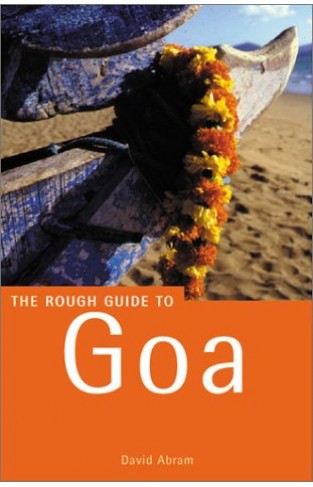The rough guide to Goa
The rough guide to Goa
By:
-
Rs 4,495.00
- Rs 8,990.00
- Ex Tax :Rs 4,495.00
- Price in loyalty points :203
You saved Rs 4,495.00.
Due to constant currency fluctuation, prices are subject to change with or without notice.
| We are offering a high discount on this book due to its “SLIGHTLY DAMAGED” condition |
If any word could be said to encapsulate the essence of GOA, it would have to be the Portuguese sossegarde, meaning "carefree". For Goan expatriates, the term conjures up memories of long, lazy evenings on pillared verandas, surrounded by tropical vegetation and the heady scent of cashew and frangipani flowers, with the crash of surf drifting periodically through a curtain of coconut palms. The pace of life in this former colonial enclave, midway down India’s southwest coast, has picked up over the past twenty years, but in spite of the increasing chaos of its capital, beach resorts and market towns, Goa has retained the laid-back feel that has traditionally set it apart from the rest of the country. Its 1.4 million inhabitants are unequivocal about the roots of their distinctiveness; while most of the subcontinent was colonized by the stiff-upper-lipped British, Goa’s European overlords were the dissolute Portuguese, a people far more inclined to enjoy the good things in life than their Anglo-Saxon counterparts. Goa was Portugal’s first toehold in Asia, brutally carved out by the explorer Alfonso Albuquerque in 1510, and served as the linchpin for a vast trade empire for over 450 years. However, when the Portuguese colonial mission began to flounder in the seventeenth century, so too did the fortunes of its capital. Cut off from the rest of India by a wall of mountains and hundreds of miles of unnavigable alluvial plain, it remained resolutely aloof from the wider subcontinent. While India was tearing itself to pieces in the run-up to Independence in 1947, the only machetes being wielded here were cutting coconuts. Not until 1961, after an exasperated Indian prime minister, Jawaharlal Nehru, gave up trying to negotiate with the Portuguese dictator Salazar and sent in the army, was Goa finally absorbed into India. A decade or so later the overland travellers’ trail wriggled its way south down the Konkan Coast from Mumbai, ensuring that this hitherto remote enclave of Latin-influenced culture would never be quite the same again. |



